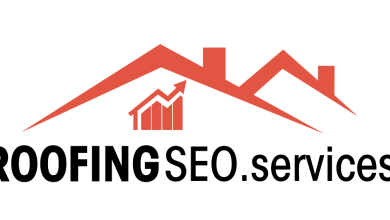
The online retail industry continues to grow at an incredible pace, and 2025 is shaping up to be another promising year for entrepreneurs looking to start their own e-commerce ventures.
With advances in technology, more consumers shopping online, and the ease of setting up a digital store, there’s never been a better time to dive into online retail entrepreneurship.
In this guide, we’ll walk you through the essential steps to start an online retail business in 2025, from selecting your products and setting up your store, to marketing effectively and scaling for growth.
If you’re ready to turn your business idea into a profitable online retail store, let’s get started!
Step 1: Planning Your Online Retail Business
Creating an online retail business begins with careful planning. Start by figuring out what unique market you’ll serve, understanding your audience, and deciding how you’ll operate.
These steps are crucial to setting a strong foundation for your venture.
Find Your Niche Market
Finding a niche is like discovering your business’s sweet spot. A niche lets you focus on a specific segment of the market.
Start by brainstorming areas you are passionate about or knowledgeable in. Consider what you’re good at and how that can translate into a product or service.
Research competitors in potential niches to see who else is doing what you’re interested in.
Look for areas that are not overly saturated, where you can offer something unique. Keep an eye on trends, as they might reveal potential niches that are gaining popularity.
Research Market Demand and Target Audience
Understanding market demand helps you know if there’s an audience for your idea. Use tools like Google Trends or market research reports to see if people are searching for products in your niche.
High demand paired with low competition often indicates a good business opportunity.
Define your target audience by looking into demographics like age, gender, and location. Behavioral data, such as buying habits and interests, can also provide valuable insights.
Knowing who your audience is will guide everything from product design to marketing strategies.
Choose the Right Business Model
Choosing the right business model involves deciding how your business will operate.
Common models include dropshipping, where you sell products without holding inventory, or wholesale, where you buy products in bulk and sell them individually.
Subscription models and private labeling are also options.
Consider your resources, skills, and the niche market while selecting a model. Some models require more upfront investment, while others might offer more flexibility.
The right choice should align with your strengths and market opportunities, setting the stage for a successful launch.
Step 2: Setting Up Your Business
Creating a solid foundation for your online retail business is essential. You’ll need to take crucial initial steps, like registering your business and creating a plan for growth and operation.
These steps are vital in bringing your ideas to life and providing a background for growth.
Register Your Business Name and Structure
Choosing the right business structure is important. You might consider a sole proprietorship if you’re starting on your own. It’s simple and involves fewer regulations.
For more protection, you can choose a Limited Liability Company (LLC). This separates your assets from your business debts, offering more security.
To register, you’ll need to pick a unique business name. Then, pay the required Limited Liability Company (LLC) filing fees by state, which can also vary depending on where you’re forming your LLC. Fees typically range from $50 to $500, so be sure to check your state’s specific requirements. Once your name is approved, you’ll file the Articles of Organization with your state’s Secretary of State office.
Additionally, some states may require you to publish a notice of your LLC formation in a local newspaper. After that, getting your Employer Identification Number (EIN) from the IRS is crucial, which is like a Social Security number for your business.
Create a Business Plan
A business plan helps guide your decisions and shows potential investors your vision. Start by outlining your mission.
Detail your products and target market. What sets you apart from competitors? Include financial projections, such as expected profits and losses.
Your plan should have a marketing strategy. How will you attract and retain customers? Set clear goals and timelines. What milestones do you aim to achieve in the first year?
A well-thought-out plan acts as a roadmap for success and can adapt as your business grows.
Step 3: Launching Your Online Store
Launching your online store involves steps like picking the right platform, designing your store, optimizing for smooth user experiences, and setting up secure payment methods.
These steps ensure a successful start and a positive experience for your customers.
Choose an Ecommerce Platform
Your choice of ecommerce platform shapes your store’s future success.
Popular platforms include Shopify, WooCommerce, and BigCommerce. Each offers unique features, so consider what suits your needs.
Look for user-friendly design tools, scalability options, and integration capabilities with other software.
Ensure the platform supports your desired shopping cart features and aligns with your budget.
Design Your Online Store
The design of your online store must resonate with your brand and target audience.
Begin by selecting a memorable domain name and designing an attractive logo. These elements create a lasting impression.
Use the tools provided by your chosen platform to layout your pages effectively. Your store should be easy to navigate, with clear product categories and well-structured content.
Focus on mobile responsiveness. Many customers shop on their phones, so ensure a seamless mobile experience.
Optimize for User Experience and SEO
User experience and SEO are key factors for your store’s success. Start by ensuring fast loading times, clear navigation, and easy checkout processes. A smooth experience encourages customers to explore and purchase.
For SEO, use keyword-rich titles and descriptions for your products. Optimize images and include engaging meta descriptions to improve search visibility.
Use an intuitive SEO structure to help search engines and customers find your products easily.
Setting Up Payment Options and Security
Providing secure and convenient payment options is vital for customer trust. Set up a reliable payment gateway like PayPal, Stripe, or Square.
These gateways offer secure and flexible payment methods, including credit cards and digital wallets.
Implement SSL certificates and other security measures to protect customer data. Clearly display your security features to reassure customers during checkout.
Ensure compliance with data protection regulations, like GDPR, to maintain trust. Make it easy for customers to reach out with payment-related inquiries to enhance their confidence.
Step 4: Stocking and Managing Your Inventory
To successfully run your online retail business, it’s essential to figure out how you’ll stock and manage your inventory. Balancing costs, space, and efficiency can make a big difference.
Here are some important strategies.
Source Products from Suppliers
Start by finding reliable suppliers to get your products. Look for wholesale suppliers who offer competitive prices and good terms.
Make sure to check reviews and do a quality check on the products before committing.
Establish a strong relationship with suppliers, as timely delivery and product quality are keys to your business’s success. Having a few dependable suppliers is also a smart way to avoid running out of stock.
Consider Dropshipping vs. Holding Inventory
Dropshipping is popular because it cuts down on storage needs. You sell products without holding them in stock; instead, a supplier handles the fulfillment for you. This means you can start an ecommerce store with lower initial costs.
Dropshipping, though, comes with its challenges, such as less control over shipping times and product quality.
On the other hand, holding your inventory gives you more control over these factors. It might lead to quicker deliveries and happier customers.
Evaluate costs, risks, and how quickly you want products to reach your customers when deciding between these two approaches.
Step 5: Marketing and Growth Strategies
To succeed with your online retail business, you need smart marketing and strong growth strategies.
Use different tactics to reach your audience and grow your brand.
Implement Effective Marketing Strategies
Start with a solid marketing strategy that suits your business.
Consider using online advertising to reach more customers. Google Ads and social media ads can help. They target specific groups, which means you spend your money wisely.
Use a mix of digital marketing strategies to promote your brand. Explore email marketing as it allows you to communicate directly with your audience.
Craft engaging newsletters with valuable content to keep your audience informed and interested.
Leverage Social Media and Content Marketing
Social media presence is essential in today’s market. Platforms like Instagram, Facebook, and TikTok are great for reaching different demographics. Share engaging content frequently.
Content marketing like a blog can boost your business too. Write helpful articles related to your industry. This draws in customers and helps them see you as an expert.
You can collaborate with influencers to widen your reach. These partnerships can introduce your brand to new potential customers. Choose influencers who align with your brand values and have an audience that matches your target market.
Analyze Performance and Expand Your Reach
Use analytics to learn about your marketing performance. Track website traffic, ad engagement, and sales conversions.
Tools like Google Analytics provide insights into what’s working and what’s not. Adjust your strategies based on this data.
To expand your reach, look at new markets and platforms. Consider cross-promotions with other businesses to tap into new audiences. This can be especially effective if partnering businesses share similar values.
Regularly review your growth strategies. Always keep an eye on trends in your industry. This will help you adapt and continue to grow your online retail business effectively.
Final Thought: Focus on a Strong Brand Identity
Building a strong brand identity is key to standing out in the crowded online retail world. Your brand should tell a story that connects with your audience.
Think about what makes your business unique and how you can show that through your brand.
Create a consistent visual theme. This means having consistent colors, fonts, and logos across all platforms. Customers should recognize your brand just by its look.
Understand your audience. You need to know who your customers are and what they care about. This helps you craft messages that resonate with them.
Your messaging should be clear and consistent. Decide on a tone of voice for your brand. Whether it’s friendly, professional, or quirky, stick to it across all communications.
Don’t forget the power of social media! Use it to engage with your customers and build community. Share content that reflects your brand values and encourages conversation.



